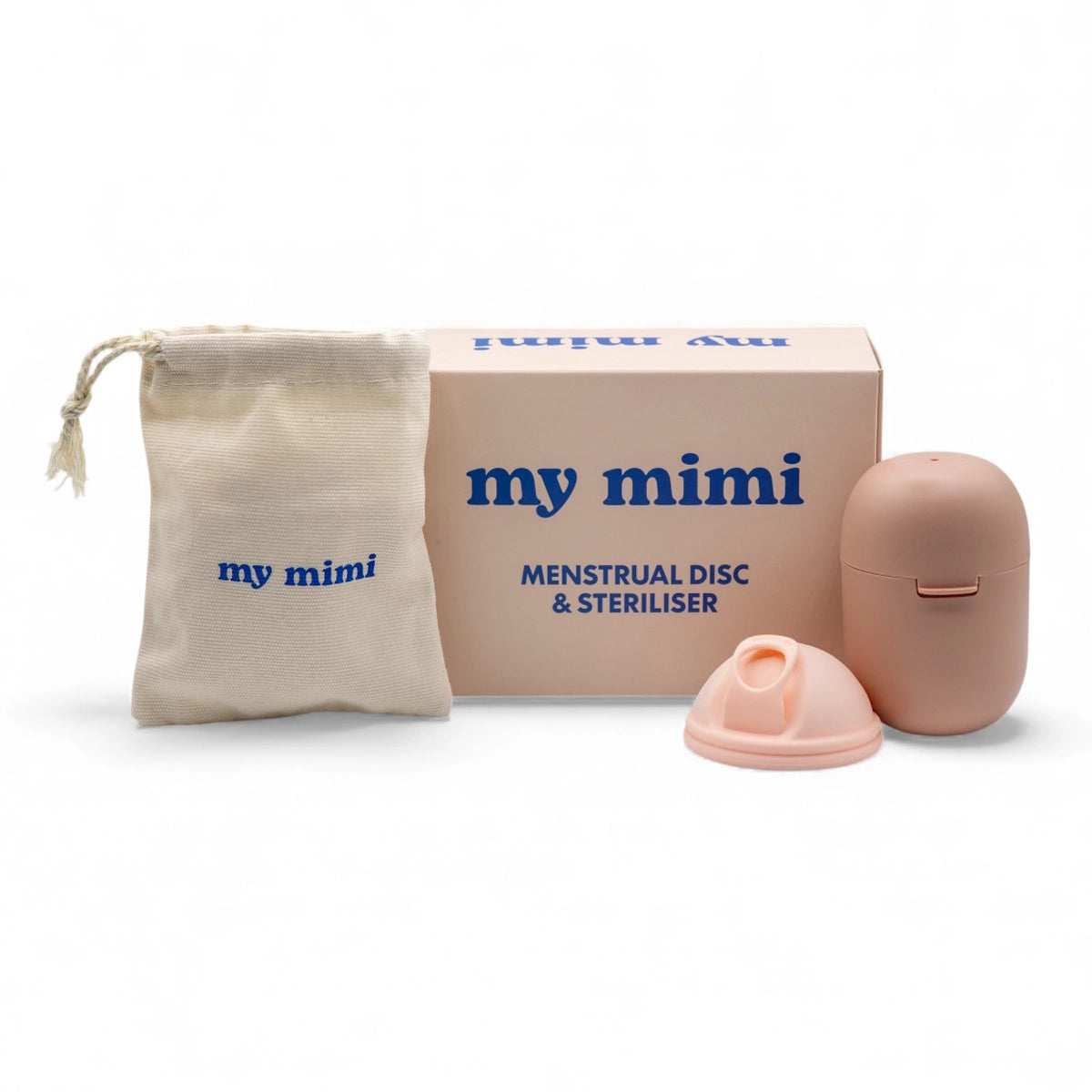are menstrual discs safe?
Date Created: 20th of July 2024
Date Modified: 6th of November 2025
Read Time: 6 minutes
Safety is a top priority in period care. If you’re considering a menstrual disc, you may be asking: are menstrual discs safe to use? This guide explains how discs work, key safety considerations, wear-time guidance, and hygiene tips. It also outlines how the my mimi menstrual disc compares with tampons and pads.
what are menstrual discs?
A menstrual disc is a flexible, disk-shaped product that collects menstrual fluid. It sits in the vaginal fornix (just below the cervix) rather than in the vaginal canal. The my mimi menstrual disc is made from body-safe, medical-grade silicone for a soft, comfortable fit suitable for extended wear.
are menstrual discs safe for your health?
Yes. Menstrual discs are generally considered safe when used as directed. The my mimi disc is made from non-toxic, hypoallergenic, TGA-compliant and FDA-registered materials and contains no added fragrances or dyes. Because a disc collects fluid rather than absorbing it, many users find it helps maintain a more balanced vaginal environment than high-absorbency tampons.
wear time: up to 12 hours
Discs can be worn for up to 12 hours. Empty sooner if you have a heavier flow. Do not exceed 12 hours between emptying/cleaning, as over-wear can increase the risk of leaks and bacterial growth.
toxic shock syndrome (tss): rare but important
Toxic Shock Syndrome (TSS) is rare but possible with any internal product. While discs do not rely on suction and do not absorb fluid (factors thought to lower risk compared with tampons), hygiene matters: always wash and dry your hands thoroughly before insertion and removal, and clean your disc as instructed.
can you use a disc with an iud?
Many people with an IUD safely use a menstrual disc. Because discs don’t create suction like menstrual cups, they may be a suitable option. Always check with your healthcare provider for personalised advice, especially if you have concerns about IUD position or recent insertion.
proper use and hygiene
- Clean hands: wash with soap and water before insertion and removal.
- Empty and rinse: empty at least every 12 hours (more often if needed). Rinse with cool water first, then wash with mild soap and warm water.
- Deep clean: for reusable discs, clean after each cycle and sterilise as per the manufacturer’s instructions.
- Positioning: if you notice leaks, re-check the rim placement behind the pubic bone. A different size or minor technique change may help.
- Storage: store your clean, dry disc in a breathable pouch between cycles.
source matters: buy from trusted sellers
Choose reputable, authorised sellers to ensure you receive a genuine, compliant product. Look for clear product labelling, contact details, and usage instructions. Avoid unverified marketplaces that don’t specify materials or compliance information.
environmental safety
Reusable menstrual discs, such as the my mimi menstrual disc, help reduce waste from disposables. With proper care and cleaning, a disc can be part of a lower-waste, long-term period care routine.
when to stop use and seek medical advice
If you experience persistent pain, unusual discharge, fever, rash, or discomfort that doesn’t improve with repositioning, stop using the disc and consult a healthcare professional. If you suspect TSS, seek urgent medical care.
conclusion: are menstrual discs safe?
Menstrual discs are generally safe when used correctly. Follow hygiene guidelines, stick to the 12-hour wear limit, choose trusted sellers, and consult your healthcare provider if you have any concerns. For sizing guidance, see our menstrual disc size guide.
Health Notice: This article is for information purposes only. It is not a substitute for medical advice. If you are experiencing symptoms of anxiety, depression or other mental health concerns, consult a qualified health professional.












